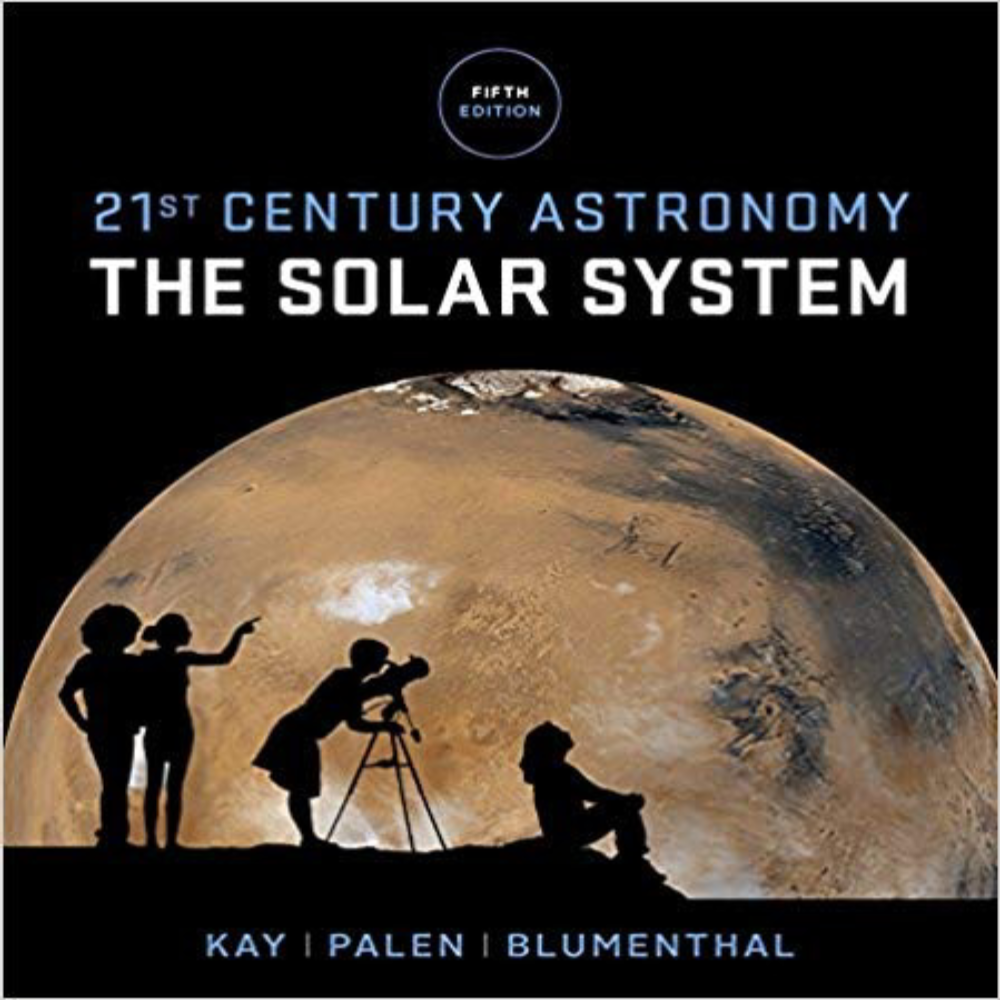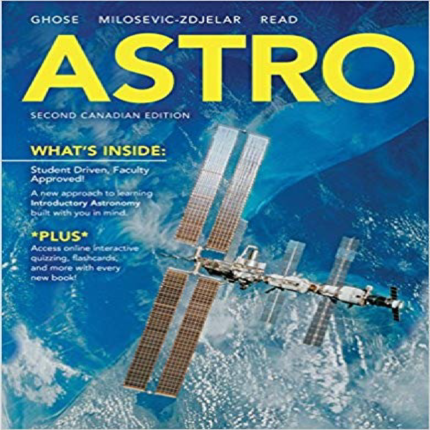Chapter 11: Planetary Moons and Rings
Learning Objectives
11.1 Many Solar System Planets Have Moons
Predict why most moons in the solar system are found around the giant planets.
Multiple Choice: 1, 2, 4, 10
Short Answer: 1
Compare and contrast the origin of moons with regular and irregular orbits.
Multiple Choice: 3, 5, 6, 7, 8, 9
Short Answer: 2, 3, 4, 5, 7
11.2 Some Moons Have Geological Activity and Water
Compare and contrast volcanism and cryovolcanism.
Multiple Choice: 20, 24
Short Answer: 11, 13
Relate the presence or absence of surface features to deduce the history of a moon’s geological activity.
Multiple Choice: 12, 13, 14, 15, 19, 23, 29, 30, 31
Short Answer: 15, 16
Summarize the observations or characteristics that differentiate between moons with current geological activity, possible activity, past activity, and no activity.
Multiple Choice: 16, 17, 22, 25, 28, 32, 33
Short Answer: 8, 9
Explain how moons can be geologically active today whereas comparably sized planets are geologically dead.
Multiple Choice: 11, 21
Short Answer: 10
Summarize the evidence for liquid oceans on giant planet moons.
Multiple Choice: 18, 26, 27
Short Answer: 12
11.3 Rings Surround the Giant Planets
Explain how rings are observed around planets.
Multiple Choice: 37, 38, 39, 43, 44, 47, 48, 51
Short Answer: 17
Discuss the two proposed origins for rings around giant planets.
Multiple Choice: 34, 35, 36, 41, 52, 56
Short Answer: 18, 22
Illustrate how moons provide orbital stability to ring material.
Multiple Choice: 42, 57
Short Answer: 19, 21
Describe the typical composition of rings.
Multiple Choice: 40, 45, 46, 49, 50, 53, 54, 55
Short Answer: 20
11.4 Ring Systems Have a Complex Structure
Relate a ring’s appearance to its composition and density.
Multiple Choice: 59, 60, 61, 62, 63, 64, 65, 66, 68
Short Answer: 23, 24
Summarize the substructure of planetary rings.
Multiple Choice: 67
Short Answer: 25, 27, 28
Predict why some giant planets have bright rings and others only have diffuse rings.
Multiple Choice: 58
Short Answer: 26
Estimate the likelihood of life on moons of the giant planets.
Multiple Choice: 69, 70
Short Answer: 29, 30
Working It Out 11.1
Use a moon’s orbit to calculate the mass of its parent planet.
Short Answer: 6
Working It Out 11.2
Compare the tidal forces experienced by two different moons.
Short Answer: 14
MULTIPLE CHOICE
- Who first discovered moons around a planet in our Solar System other than Earth?
- Newton
- Kepler
- Galileo
- Huygens
- Einstein
ANS: C DIF: Easy REF: Section 11.1
MSC: Remembering
OBJ: Predict why most moons in the solar system are found around the giant planets.
- How many moons are known in the Solar System?
- Less than 50
- At least 150
- Around 10
- Many thousands
ANS: B DIF: Easy REF: Section 11.1
MSC: Remembering
OBJ: Predict why most moons in the solar system are found around the giant planets.
- How do regular moons rotate in comparison to their planets?
- in the same direction
- in the opposite direction
- sometimes in the same direction and sometimes in the opposite direction
- Unlike their planets, moons don’t rotate at all.
ANS: A DIF: Easy REF: Section 11.1
MSC: Remembering
OBJ: Compare and contrast the origin of moons with regular and irregular orbits.
- The only planet(s) without a moon is (are)
- Mercury and Venus.
- Mercury, Venus, and Mars.
- ANS: D DIF: Easy REF: Section 11.1MSC: RememberingOBJ: Predict why most moons in the solar system are found around the giant planets.
- Which of the following is not a characteristic of regular moons?
- They revolve around their planets in the same direction as the planets rotate.
- They have orbits that lie nearly in the planets’ equatorial plane.
- They are usually tidally locked to their parent planets.
- They are much smaller than all of the known planets.
- They formed in an accretion disk around their parent planet.
ANS: D DIF: Medium REF: Section 11.1
MSC: Remembering
OBJ: Compare and contrast the origin of moons with regular and irregular orbits.
- Most large regular moons probably formed
- when passing asteroids were captured by the gravitational field of their planet.
- at the same time as their planets and grew by accretion.
- after a collision between a planet and a large asteroid fractured off a piece of the planet.
- after the period of heavy bombardment in the early Solar System.
- after a planet got kicked out of its orbit and was gravitationally captured by another planet.
ANS: B DIF: Easy REF: Section 11.1
MSC: Remembering
OBJ: Compare and contrast the origin of moons with regular and irregular orbits.
- Which property of a moon might lead you to believe it was a captured asteroid?
- It is tidally locked.
- Its orbital axis is tilted by 5 degrees compared to the planet’s rotational axis.
- It rotates in the opposite direction than its planet rotates.
- Its surface is very smooth and lacks craters.
- It is roughly the size of Earth’s moon.
ANS: C DIF: Medium REF: Section 11.1
MSC: Applying
OBJ: Compare and contrast the origin of moons with regular and irregular orbits.
- Assume that we discover a new moon of Jupiter. It orbits Jupiter at a large distance and in the opposite direction that Jupiter rotates. It is much smaller than most of Jupiter’s other moons and has a density close to that of Earth rocks. Therefore, this moon is most likely
- a regular moon that formed with Jupiter in the early Solar System.
- an irregular moon that is most likely a captured asteroid.
- an irregular moon that is most likely a captured comet.
- an irregular moon that is most likely a protoplanet that collided with Jupiter in the early Solar System and then was caught in orbit by Jupiter’s gravity.
- More information is needed before any conclusion can be made.
ANS: B DIF: Medium REF: Section 11.1
MSC: Understanding
OBJ: Compare and contrast the origin of moons with regular and irregular orbits.
- If a moon has a retrograde orbit, then it
- orbits in the opposite direction than its planet rotates.
- orbits in the opposite direction than its planet revolves around the Sun.
- orbits in a clockwise direction as viewed from the planet’s north pole.
- both a and c
- all of the above
ANS: D DIF: Difficult REF: Section 11.1
MSC: Understanding
OBJ: Compare and contrast the origin of moons with regular and irregular orbits.
- Why do the giant planets have the largest share of moons in the solar system?
- There was more rocky material present at their orbital positions, so they collected more moons
- Being the most massive planets in the solar system, they were able to gather more material to form moons than the terrestrial planets
- The temperature of the solar nebula at other locations in the solar system was too high for moons to form around the terrestrial planets
- Since they rotate faster than the terrestrial planets, the giant planets were able to ‘spin off’ clumps of material which formed moons
ANS: B DIF: Easy REF: Section 11.1
MSC: Understanding
OBJ: Predict why most moons in the solar system are found around the giant planets.
- Which of the following is not a characteristic of regular moons?










Reviews
There are no reviews yet.